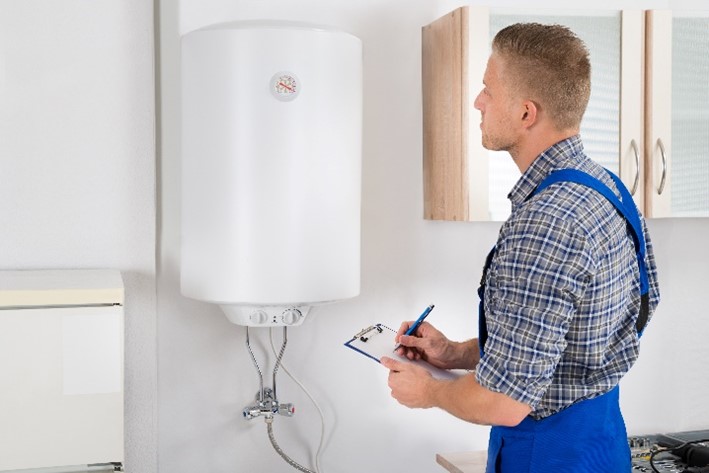How do you actually feel on the subject of Water Heater Maintenance Tips You Can't Afford to Forget?

Warm water is crucial for day-to-day convenience, whether it's for a rejuvenating shower or cleaning dishes. To ensure your warm water system runs efficiently and lasts longer, routine upkeep is key. This write-up offers functional tips and insights on just how to keep your home's hot water system to prevent disturbances and pricey repairs.
Introduction
Preserving your home's hot water system may appear complicated, yet with a couple of basic actions, you can guarantee it operates smoothly for many years ahead. This overview covers everything from comprehending your hot water system to do it yourself maintenance suggestions and understanding when to call expert aid.
Importance of Maintaining Your Hot Water System
Routine maintenance not only prolongs the life expectancy of your hot water system but also ensures it operates efficiently. Disregarding upkeep can cause lowered performance, higher energy bills, and even premature failure of the system.
Indications Your Hot Water System Requirements Upkeep
Recognizing when your hot water system needs interest can stop significant problems. Watch out for signs such as inconsistent water temperature, weird sounds from the heating unit, or rustic water.
Flushing the Hot Water Heater
Purging your water heater removes sediment buildup, improving efficiency and prolonging its life.
Monitoring and Changing Anode Rods
Anode poles protect against deterioration inside the container. Checking and changing them when worn is important.
Complicated Problems Requiring Professional Assistance
Examples consist of major leaks, electric issues, or if your water heater is continually underperforming.
Regular Professional Upkeep Advantages
Professional maintenance can consist of complete assessments, tune-ups, and making sure compliance with safety criteria.
Evaluating and Changing Temperature Settings
Readjusting the temperature level settings ensures optimum efficiency and security.
DIY Tips for Upkeep
You can perform numerous maintenance jobs yourself to keep your warm water system in top problem.
Looking for Leakages
Routinely inspect pipelines and connections for leaks, as these can bring about water damage and higher costs.
Comprehending Your Hot Water System
Prior to diving into upkeep jobs, it's useful to comprehend the basic elements of your hot water system. Normally, this includes the hot water heater itself, pipelines, anode rods, and temperature level controls.
Monthly Upkeep Tasks
Normal regular monthly checks can aid capture minor concerns before they rise.
Testing Pressure Alleviation Valves
Evaluating the stress relief valve ensures it functions properly and prevents extreme pressure accumulation.
Insulating Pipelines
Insulating warm water pipelines decreases warmth loss and can save power.
When to Call an Expert
While DIY upkeep is beneficial, some concerns call for professional competence.
Final thought
Normal maintenance of your home's hot water system is necessary for performance, longevity, and expense savings. By complying with these pointers and understanding when to look for professional assistance, you can make certain a reliable supply of hot water without unanticipated disturbances.
How to Maintain an Instant Hot Water Heater
Before tinkering with your hot water heater, make sure that it’s not powered on. You also have to turn off the main circuit breaker and shut off the main gas line to prevent accidents. Also turn off the water valves connected to your unit to prevent water from flowing into and out of the appliance. 2. When you’re done, you have to detach the purge valves’ caps. These look like the letter “T†and are situated on either side of the water valves. Doing so will release any pressure that has accumulated inside the valves while at the same time avoid hot water from shooting out and burning your skin. 3. When the purge valves’ caps are removed, you have to connect your hosing lines to the valves. Your unit should have come with three hoses but if it didn’t, you can purchase these things from any hardware or home repair shops. You can also get them from retail stores that sell water heating systems. Read the user’s manual and follow it to complete this task properly. When the hosing lines are connected, open the purge port’s valves. 4. You should never use harsh chemical cleaners or solutions when cleaning your unit. Make use of white vinegar instead. It should be undiluted and you’ll probably use about 2 gallons. 5. Now flush your water heater. This task should probably take about 40 minutes. We can’t give you specific directions for this because the procedure is carried out depending on the type, model and brand of your heater. With that being said, refer to the user’s manual. 6. When you’re done draining the unit, you have to turn off the purge port valves again. Remove the hosing lines that you earlier installed on each of the water valves. Put the valve caps (purge port) back in their respective places and be very careful so as not to damage the rubber discs that are found inside these caps. 7. Now that everything’s back in place, check your user’s manual again to find out how to reactivate your water heating system. 8. Once it is working, turn one of your hot water faucets on just to let air pass through the heater’s water supply pipes. Leave the tap on until water flows smoothly out of it. https://www.orrplumbing.com/blog/2014/september/how-to-maintain-an-instant-hot-water-heater/

We were brought to that write-up about Tips on Maintaining a Water Heater through a friend on a different website. Do you know another person who is intrigued by the topic? Feel free to share it. I value your readership.
This Website